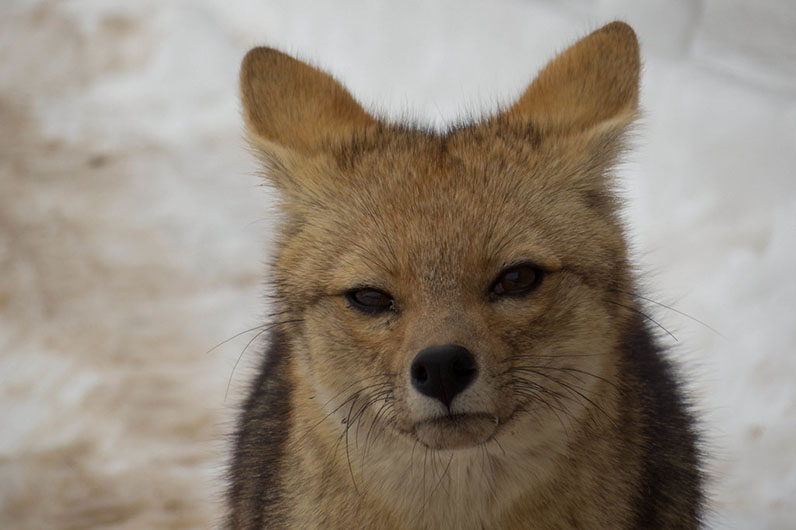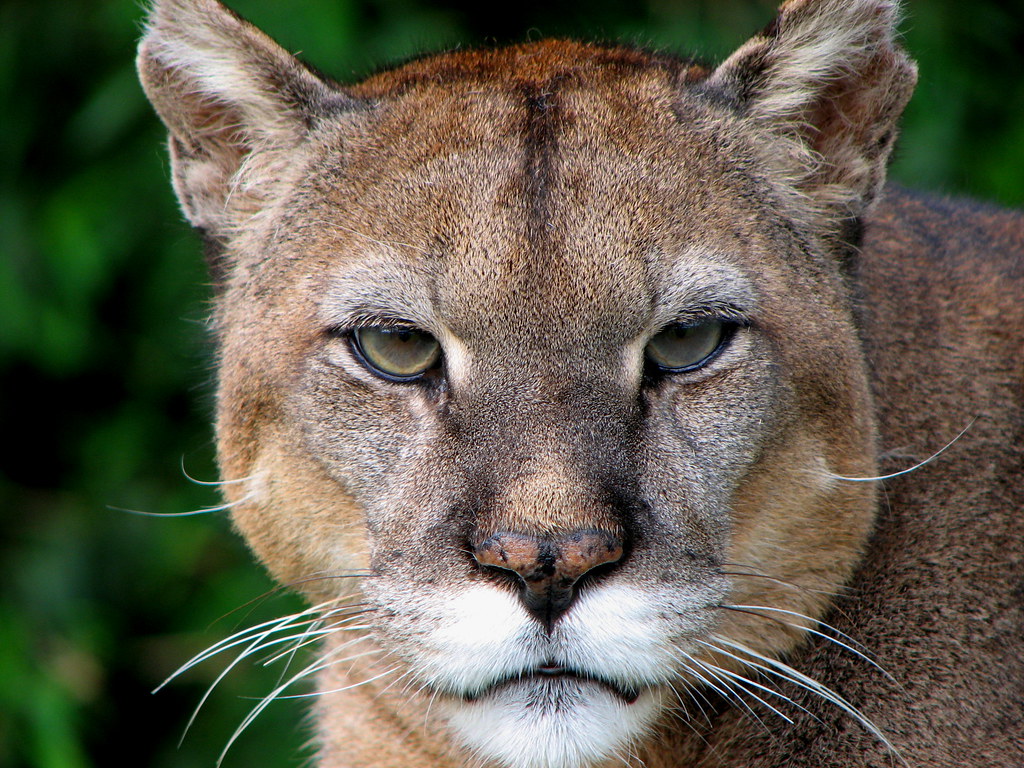Legend has it that an encounter with an Andean fox (Lycalopex culpaeus) in Patagonia grants mine explorers wealth and happiness for life. An ancient folktale tells that the bushy-tailed animal shows up to mine seekers in the exact location where bounteous gold deposits hide. The Andean fox—or South American fox—is not a true fox, like other species of the Lycalopex genus. Although its appearance resembles that of foxes belonging to the Vulpes genus, it is a closer relative to wolves and jackals.
This fox species is the second largest endemic canid in South America, smaller only than the Maned wolf (Chrysocyon brachyurus). Besides Patagonia, it inhabits high grasslands, deserts, steppes, and forests along the line of the Andes, from Southern Colombia to Tierra del Fuego. Its colors offer perfect camouflage in the variety of environments across which it roams. The head, neck, ears, and legs are red or taupe. The jaw and lower body are usually “dirty white” or light brown, and the back of its body is a mix of yellow and black. The tail is thick and gray, with a black tip and a darker area around the base.

Lycalopex culpaeus, or Andean fox
These foxes feed on animals—such as rodents and lagomorphs—and native fruits, whose seeds they help to disperse. They thus collaborate with the regeneration and dissemination of the local flora, besides controlling populations whose excessive numbers can disrupt ecosystems. Whether they can point to the location of gold mines or not, Andean foxes indeed play a valuable role. In areas where anthropogenic activities are more intense, they might also feed on lambs, calves, and chickens.
Sheep, lambs, and calves can also be part of the Patagonian puma’s (Puma concolor concolor) diet. Also known as the South American cougar, this dextrous animal can put down several animals in one night, just for training its cubs. Although its ferocity frightens many, its powerful body and gaze, slender legs, and long (75cm), black-tipped tail attracts flocks of tourists. While this type of puma dwells in various habitats across Patagonia—dense forests, steppes, shrublands, and rocky areas—spotting one is a challenging endeavor, as this tawny-golden animal blends perfectly into the landscape.

Puma concolor concolor, or Patagonian puma
In the Torres del Paine National Park, Chile, tourists have a greater chance to meet a Patagonia puma; a high density (50 to 100 individuals) of the animal is found there. That, however, has not always been the case. For many years, local farmers killed pumas to protect their livestock and generate extra income selling the feline’s fur. In the 1900s, poaching led to a sharp decline in the puma population not only in the area, but throughout Patagonia. In 1972, hunting these animals was banned in Torre del Paines, leading to a change in mentality among inhabitants of the region.
In other parts of Patagonia, pumas have not been so lucky. Because they occasionally prey on calves and sheep, many farmers still perceive these wild animals as plagues. That happens although the pumas mainly predate guanacos (Lama guanicoe), wild llamas whose uncontrolled population can overgraze different areas, damaging one of the farmers’ most precious resource: the soil. Besides guanacos, Patagonian pumas feed on and control small rodents and deer (Hippocamelus bisulcus) populations. The felines also leave food for necrophilic species—like the condor (Vultur gryphus)—helping to maintain the balance of Patagonia’s delicate ecosystem.
Farmers are not the only ones failing to ignore the ecological importance of wild animals. Members of the local government in Chubut, Argentina, are going against the regional-to-global movements striving for biodiversity conservation. Standing in favor of farmers, this local government has enforced an anachronistic law (Law XVII-Nº 52). This law offers financial incentives for the extermination of Patagonia pumas and Andean foxes. The government also trains farmers on how to place animal traps correctly. Promoting these actions, Chubut government members are further fueling the cruelty-driven market interested in animal fur and puma skulls.
As the majority of events involving outdated proposals to solve human-wildlife clashes, irony envelops the Chubut case. Under normal circumstances, most Andean foxes and Patagonian pumas do not feed on domestic livestock. However, agricultural developments in Chubut are taking a toll on native preys like rodents and guanacos, whose habitats are fragmented or destroyed. That is because Chubut hosts the highest number (31.77%) of sheep in Argentina—the 5th largest wool producer in the world—and monoculture plantations continue to expand there.
Fortunately, organizations operating across Patagonia have been trying to promote ethical solutions to these disrupted human-wildlife relationships. One of them is the Wildlife Conservation Society (WCS) Argentina, working towards recovering guanacos and other native preys in Patagonia. WCS Argentina and Rewilding Argentina Foundation also help farmers to adopt non-lethal methods to prevent puma and fox attacks, such as the use of guarding dogs. Rewilding Argentina furthermore supports sustainable tourism in stunning Patagonia, inspired on the number of foreigners yearning for an encounter with a puma.
Be it via donations or as a sustainable tourist and consumer, every person can aid Andean foxes and Patagonian pumas. More urgently, Fundación Vida Silvestre Argentina needs support to demand the repeal of Law XVII-Nº 52. Their petition only asks for names and surnames (nombre y apellido) and an email address (mail). Helping is simpler than finding gold.
Get more like this—Sign up for our daily inspirational newsletter for exclusive content!
__
Photo: andrevielmamansilla via Flickr Creative Commons; victor+ via Flickr Creative Commons




